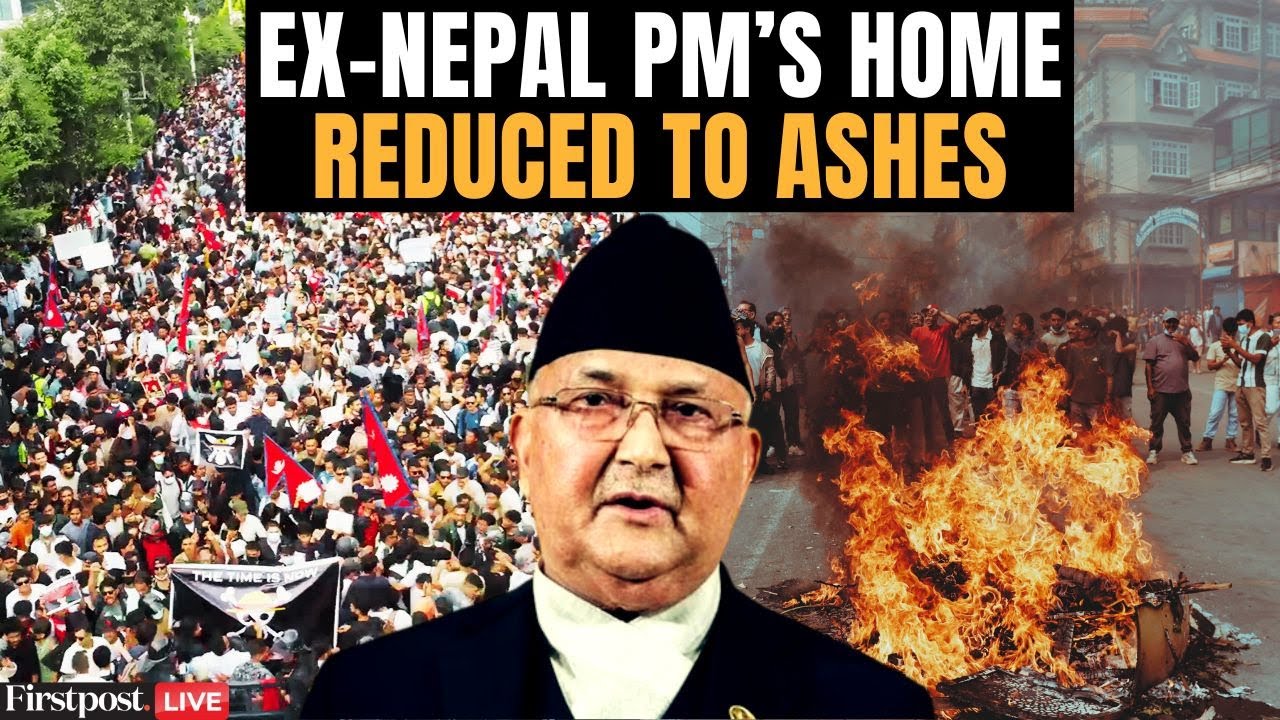
NGOCSTIP – Nepal is facing one of the most turbulent chapters in its political history after a shocking viral video emerged showing former Prime Minister Sher Bahadur Deuba bloodied and carried out of his residence. The incident happened during violent protests in Kathmandu where angry demonstrators stormed and set fire to the homes of several political leaders. The protests began as peaceful rallies organized by students and Generation Z activists but quickly escalated into violent clashes. The decision to block access to popular social media platforms fueled public anger and amplified existing frustration about corruption. When protesters attacked Deuba’s house along with the residence of his wife Arzu Rana Deuba who currently serves as Nepal’s Foreign Minister it symbolized the growing intensity of the unrest. Supporters evacuated a weakened Deuba as images spread online and intensified the sense of crisis.
The unrest in Nepal has expanded in recent days as protesters targeted government offices and private homes. Demonstrations turned into riots after protesters breached barricades and security forces used tear gas and rubber bullets. Witnesses saw the mob loot and torch Deuba’s home before they injured him and supporters escorted him away. The Nepalese military evacuated ministers and cabinet members for safety after rioters set several houses on fire. Protesters vandalized and partially burned the parliament building during the riots. The chaos showed deep anger among citizens who accuse the ruling class of corruption and mismanagement. The nationwide protests now represent political discontent as well as a generational uprising.
“Read about: Shock in Doha as Israel Strikes Hamas Leadership Hiding in Qatar”
One of the defining images of the crisis in Nepal is the video showing Deuba bloodied. The footage spread rapidly across platforms and captured global attention. In the clip Deuba appears weak while his head is bleeding and wrapped. He is carried by several men trying to protect him from the surging crowd. The fact that the former Prime Minister of Nepal was left vulnerable shocked supporters and critics alike. While his current health status is unclear the video became symbolic of authority collapse amid mass anger. Social media amplified this image as a rallying cry for demonstrators. They claimed their fight against corruption and repression was breaking through the wall of power.
Political instability in Nepal reached new heights as Prime Minister KP Sharma Oli announced his resignation under mounting pressure. The decision came after days of student led protests demanding accountability and an end to systemic corruption. Reports confirmed that Oli fled to Dubai seeking temporary exile while chaos unfolded in the capital. Protesters not only burned his personal residence but also targeted the home of President Ram Chandra Poudel. The parliament complex itself was attacked signaling a direct assault on the symbols of state authority. The Civil Aviation Authority temporarily closed airports citing security concerns as violence spread. The fall of Oli and the injuries suffered by Deuba illustrate how deep the crisis has become. What began as anger over restricted access to social media escalated into a wholesale rejection of the political establishment.
The government’s decision to block dozens of social media platforms is widely viewed as the spark that ignited the uprising. Authorities argued that the ban was necessary to stop fake accounts spreading hate speech misinformation and online fraud. However protesters insisted that the move was an attempt to silence dissent and restrict free expression. For young people in Nepal especially students social media is a critical space for organization activism and community. The sudden removal of that platform was perceived as intolerable. Chants and slogans during the marches emphasized both the fight against corruption and the defense of digital freedom. Analysts argue that the protests reflect a broader global trend where attempts to control online platforms trigger fierce backlash. In Nepal this dynamic collided with years of pent up frustration over corruption and lack of opportunity culminating in unprecedented chaos.